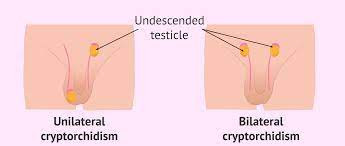Definisi
Testis retraktil adalah suatu kondisi testis atau buah zakar berpindah tempat keluar-masuk antara kantung skrotum dan selangkangan. Skrotum adalah kantung kulit yang menggantung di belakang penis. Testis atau buah zakar normalnya berada di kantung skrotum. Testis retraktil dapat terjadi pada salah satu atau kedua testis.
Perbedaan testis retraktil dan testis yang tidak turun (kriptorkidisme) adalah testis retraktil terjadi ketika testis sudah berhasil turun ke dalam kantung skrotum ketika lahir. Sementara, kondisi kriptorkidisme terjadi ketika testis tidak turun ke kantung skrotum ketika lahir. Kriptorkidisme mungkin terlihat tidak berbahaya, namun bila dibiarkan akan memunculkan risiko terhadap kesehatan.
Testis retraktil sering terjadi pada anak laki-laki yang berusia muda dan tidak dianggap sebagai risiko kesehatan yang serius. Testis dapat kembali ke skrotum dengan sendirinya, tapi kadang diperlukan bantuan tangan (terutama oleh tenaga kesehatan) untuk memindahkan testis kembali. Pada sebagian besar anak laki-laki, testis retraktil akan menghilang dengan sendirinya seiring berjalannya waktu menuju usia pubertas.
Penyebab
Testis terletak di bagian perut pada masa perkembangan janin di dalam kandungan. Pada bulan-bulan terakhir menuju kelahiran, testis akan turun ke kantung skrotum. Saat anak laki-laki lahir, testis sudah berada di kantung skrotum, tapi bisa pula tidak langsung turun ke kantung skrotum. Penurunan testis yang tidak sempurna pada saat lahir belum dianggap sebagai suatu masalah, karena testis akan turun dengan sendirinya dalam waktu beberapa bulan. Testis retraktil ditandai dengan testis yang sudah turun ke dalam kantung skrotum ketika lahir atau beberapa bulan setelah lahir.
Penyebab dari testis retraktil adalah masalah pada otot kremaster. Otot kremaster berada di sekitar testis dan menempel di testis. Otot kremaster bekerja seperti otot lainnya yang dapat berkontraksi dan relaksasi. Ketika otot kremaster ini berkontraksi atau menegang, otot akan menarik testis ke dalam tubuh. Kejadian ini disebut sebagai refleks kremasteristik. Refleks ini terjadi normal pada laki-laki dan dapat dipengaruhi oleh:
- Udara dingin
- Sentuhan halus terutama di paha bagian dalam
- Perubahan emosi seperti cemas, sedih, dan tertawa
Refleks yang normal biasanya tidak akan sampai membuat testis menjadi retraktil, namun refleks yang berlebihan atau otot yang terlalu aktif bisa menyebabkan testis tertarik keluar ke selangkangan.
Faktor Risiko
Terdapat beberapa faktor yang dapat meningkatkan risiko testis retraktil yaitu:
- Riwayat testis retraktil di keluarga, atau kelainan penurunan testis lainnya
- Adanya paparan dengan kondisi pemicu seperti udara, sentuhan, dan perubahan emosi
Gejala
Gejala utama dari testis retraktil adalah hilangnya testis dari kantung skrotum beberapa kali dan testis akan kembali ke kantung skrotum dengan sendirinya. Testis yang dirasa menghilang dapat terjadi pada salah satu atau kedua testis. Beberapa gejala lain dari testis retraktil adalah:
- Testis dapat dipindahkan menggunakan tangan dari selangkangan menunju kantung skrotum dan tidak langsung kembali ke selangkangan ketika dilepas. Tidak terasa nyeri saat dipindahkan.
- Testis dapat tiba-tiba hilang dari kantung skrotum dan tiba-tiba muncul kembali ke dalam kantung skrotum.
- Kondisi ini terjadi ketika anak belum mencapai usia pubertas.
Diagnosis
Diagnosis testis retraktil dilakukan oleh dokter melalui wawancara gejala yang dialami lalu dilanjutkan dengan pemeriksaan fisik. Dokter akan memastikan kelainan yang terjadi bukan testis yang tidak turun. Dokter akan mencari testis apabila kantung skrotum teraba kosong. Bila teraba testis di sekitar selangkangan, doker akan mencoba memindahkan testis kembali ke kantung skrotum. Pemeriksaan ini tidak menimbulkan rasa nyeri. Hanya melalui pemeriksaan ini, dokter dapat mendiagnosis penyakit testis retraktil.
Umumnya tidak diperlukan pemeriksaan penunjang atau tambahan pada kondisi testis retraktil. Orang tua perlu memperhatikan dan menjaga agar anak berada dalam kondisi relaks selama pemeriksaan, hal ini dilakukan untuk memudahkan proses pemeriksaan. Anak dapat diperiksa dalam beberapa posisi seperti berbaring, duduk, atau jongkok. Tujuan dari pemeriksaan fisik yang dilakukan adalah untuk mempermudah penemuan testis dan memindahkan posisi testis kembali ke kantung skrotum.
Tata Laksana
Testis retraktil bisa ditangani tanpa menggunakan obat atau prosedur khusus. Testis dapat kembali ke kantung skrotum dengan sendirinya tanpa bantuan medis. Testis yang naik ke selangkangan juga dapat didorong menggunakan tangan untuk turun kembali ke kantung skrotum. Kondisi testis retraktil umumnya akan hilang pada sebagian besar anak ketika mereka mencapai usia pubertas. Dokter hanya perlu memantau apakah terjadi perubahan testis lagi setelah testis dikembalikan ke dalam skrotum. Hanya sebagian kecil kasus testis retraktil yang testisnya tertahan dan tidak dapat turun memasuki kantung skrotum. Bila hal ini terjadi, maka akan dilakukan penanganan medis berupa operasi.
Anak laki-laki yang mengalami testis retraktil mungkin akan merasa tidak nyaman dengan kondisi ini. Anda sebagai orangtua atau pengasuh harus menjelaskan sebaik mungkin kepada anak apa kondisi yang sedang dialami. Ajari anak untuk menyadari sendiri lokasi testis atau ketika kantung skrotum kosong dan memberitahu Anda bila terasa tidak nyaman. Beri penjelasan bahwa ini bukan sesuatu yang memalukan atau menujukkan kalau dirinya bermasalah.
Komplikasi
Secara umum tidak ada komplikasi serius yang dapat terjadi dari testis retraktil. Gangguan yang mungkin terjadi apabila testis tersebut tertahan ketika naik ke selangkangan atau kondisi yang disebut testis ascendens. Perlu dilakukan pemeriksaan rutin setidaknya 1 tahun sekali untuk memastikan kondisi ini tidak terjadi. Masalah ini tidak akan mempengaruhi pertumbuhan, kesuburan, dan perkembangan seksual anak.
Pencegahan
Testis retraktil tidak dapat dicegah karena kondisi ini sudah terjadi sejak masih di dalam kandungan. Namun, Anda dapat menghindari pemicu agar testis tidak terus keluar dari kantung skrotum dan naik ke selangkangan.
Kapan Harus ke Dokter?
Setelah proses persalinan, dokter akan melakukan pemeriksaan kepada bayi Anda. Dokter akan memastikan apakah testis turun ke kantung skrotum atau tidak. Ketika testis tidak turun, dokter akan melakukan pemeriksaan tambahan beberapa kali di bulan berikutnya. Bila Anda menyadari kondisi skrotum kosong pada anak, segeralah periksa ke dokter. Agar dilakukan pemeriksaan lebih lanjut kondisi yang dialami testis retraktil atau kelainan lain.
Mau tahu informasi seputar penyakit lainnya? Cek di sini, ya!
- dr Hanifa Rahma
Retractile Testicle: Symptoms, Causes, Diagnosis, and Treatment. Cleveland Clinic. (2022). Retrieved 2 July 2022, from https://my.clevelandclinic.org/health/diseases/16601-retractile-testicle.
Retractile testicle - Symptoms and causes. Mayo Clinic. (2022). Retrieved 2 July 2022, from https://www.mayoclinic.org/diseases-conditions/retractile-testicle/symptoms-causes/syc-20377197.
Kirk, J. (2022). Retractile Testicles | Children's Hospital of Philadelphia. Chop.edu. Retrieved 2 July 2022, from https://www.chop.edu/conditions-diseases/retractile-testicles.












